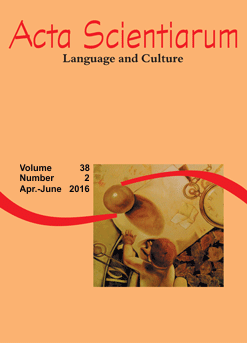<b>Glossário hipermídia no ensino-aprendizagem implícito de vocabulário em língua inglesa
Resumo
Considerando a carência de estudos sobre a influência da proficiência linguística no aprendizado implícito de vocabulário em ambiente hipermídia, este estudo investiga a relevância do glossário hipermídia no ensino-aprendizagem implícito de vocabulário de alunos de nível elementar de inglês como língua estrangeira. No plano teórico, o estudo é fundamentado nos pressupostos das seguintes teorias: Abordagem Conexionista, que busca explicar a cognição humana e a aquisição de conhecimento, e Teoria Cognitiva do Aprendizado Multimídia, proposta por Mayer (2001), que busca explicar o processamento da informação em ambiente de aprendizagem multimodal. Este estudo apresenta a seleção e o desenvolvimento de um ambiente hipermídia de leitura contendo um glossário hipermídia orientado por parâmetros delimitados no plano teórico. Esse material, utilizado na geração de dados, foi aplicado a 39 alunos de nível elementar de inglês da Universidade Federal de Juiz de Fora, divididos em dois grupos (A e B). O ganho médio de aprendizagem obtido tanto no Grupo A, 28,5 [p.p.], quanto no Grupo B, 21 [p.p.], indicam que o glossário hipermídia pode contribuir para o aprendizado implícito de vocabulário de alunos de nível elementar, com destaque para a anotação visual.
Downloads
DECLARAÇÃO DE ORIGINALIDADE E DIREITOS AUTORAIS
Declaro que o presente artigo é original, não tendo sido submetido à publicação em qualquer outro periódico nacional ou internacional, quer seja em parte ou em sua totalidade.
Os direitos autorais pertencem exclusivamente aos autores. Os direitos de licenciamento utilizados pelo periódico é a licença Creative Commons Attribution 4.0 (CC BY 4.0): são permitidos o acompartilhamento (cópia e distribuição do material em qualqer meio ou formato) e adaptação (remix, transformação e criação de material a partir do conteúdo assim licenciado para quaisquer fins, inclusive comerciais.
Recomenda-se a leitura desse link para maiores informações sobre o tema: fornecimento de créditos e referências de forma correta, entre outros detalhes cruciais para uso adequado do material licenciado.




















6.png)









